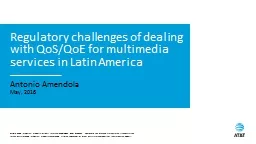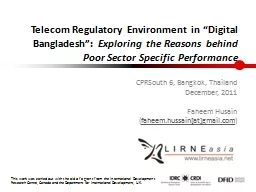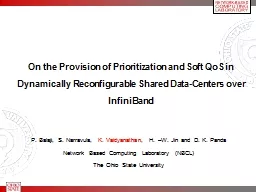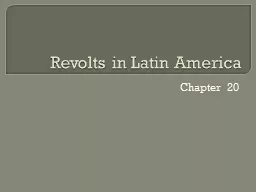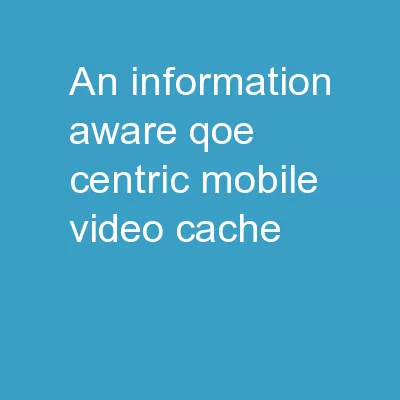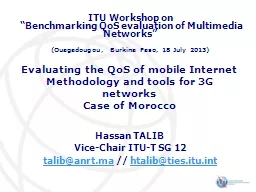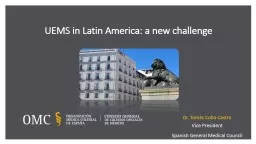PPT-Regulatory challenges of dealing with QoS/QoE for multimedia services in Latin America
Author : contera | Published Date : 2020-08-06
Antonio Amendola antonioamendolaintlattcom antonioamendola May 2016 DIRECTV now part of the ATampT family Latin America multimedia services landscape 6 key challenges
Presentation Embed Code
Download Presentation
Download Presentation The PPT/PDF document "Regulatory challenges of dealing with Qo..." is the property of its rightful owner. Permission is granted to download and print the materials on this website for personal, non-commercial use only, and to display it on your personal computer provided you do not modify the materials and that you retain all copyright notices contained in the materials. By downloading content from our website, you accept the terms of this agreement.
Regulatory challenges of dealing with QoS/QoE for multimedia services in Latin America: Transcript
Download Rules Of Document
"Regulatory challenges of dealing with QoS/QoE for multimedia services in Latin America"The content belongs to its owner. You may download and print it for personal use, without modification, and keep all copyright notices. By downloading, you agree to these terms.
Related Documents

